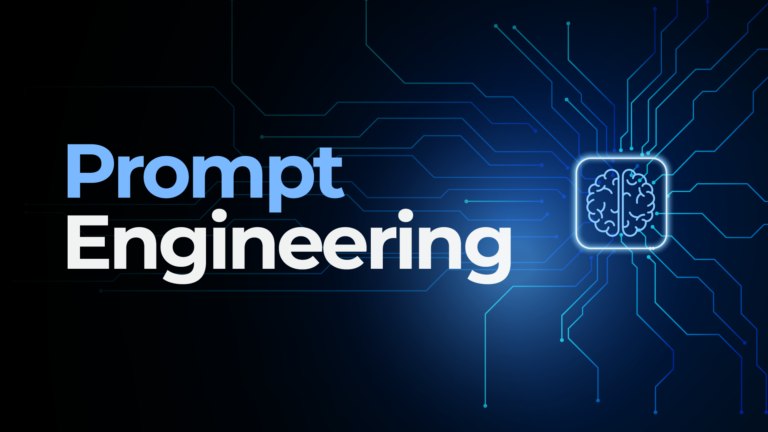Artificial Intelligence (AI) is rapidly changing the face of the marketing industry. It provides clearer insights into audiences while simultaneously offering the ability for users to identify online trends and conversations swiftly. Therefore, brands that covet better returns on investments would do well to invest in AI-powered marketing tools. In this introductory article, we will delve into the relationship between AI and marketing, and how businesses are leveraging AI to drive better outcomes. Be it personalised product recommendations, predictive analytics, AI-powered customer segmentation, or chatbots- AI is an immensely versatile Swiss army knife that helps marketers enhance the effectiveness and efficiency of their campaigns. To start off, let’s briefly explain what Artificial Intelligence is.

What is artificial intelligence?
In short, Artificial Intelligence is the simulation of human intelligence via machines that are programmed to emulate human actions and thought processes. It involves the development of complex algorithms and models that enable machines to perform tasks that would typically require the intervention of human intelligence. For instance, AI is now capable of facilitating image recognition, deciphering natural language, and making decisions.
AI encompasses several subfields, including machine learning, big data, natural language processing, and predictive analytics.
The relationship between AI and marketing
In essence, marketing is all about empathising with, understanding, and engaging customers. In the digital age, AI is playing a critical role in helping businesses achieve this. Currently, with AI, businesses can analyse vast amounts of customer data, identify patterns, and make accurate predictions about consumer behaviour. Overall, this allows marketers to tailor their messaging and offerings to better meet customer needs.
Big data and predictive analytics
Big data refers to the vast amounts of data generated by businesses and consumers. Currently, this data includes customer interactions, demographic information, and behavioural data. With the implementation of artificial intelligence in marketing, businesses can analyse this data to gain insights into customer behaviour and make calculated predictions about future trends.
Predictive analytics is a branch of AI that involves the use of statistical models and algorithms to dissect data and anticipate future events. In the context of marketing, predictive analytics are used to identify the most effective marketing strategies, predict customer behaviour, and optimise marketing campaigns in real-time. As such, AI marketing capabilities allow for dynamic features such as automated sales forecasts and content creation, and real-time personalisation.
Chatbots and customer service
Chatbots are AI-powered virtual assistants that utilise natural language processing to interact with customers in real-time. They are used to answer frequently asked questions, provide product recommendations, and even handle customer complaints. Therefore, chatbots provide an efficient and cost-effective way for businesses to engage with customers. As a result, they have become increasingly popular in recent years.
Consider why chatbots are desirable in the first place. Plainly, chatbots help consumers find solutions regardless of where they are or what they use. Effectively, this means that individuals do not have to waste valuable time combing through cluttered inboxes, irrelevant forms, and other content. Communication, service, and transactions are all intertwined in one convenient service.
Real-time bidding in digital advertising
Thanks to its efficiency and cost-effectiveness, real-time bidding (RTB) has undoubtedly become one of the most popular ways to purchase ad inventory online. It is a type of programmatic advertising that uses AI to automate the buying and selling of advertising space in real-time. RTB enables advertisers to target specific audiences based on demographics, behaviour, and other criteria. As such, it has become an essential tool in the marketing industry.
When a consumer visits a web page, the browser sends a request to an ad server. The ad server then directs that particular ad request to an exchange where AI-powered software can bid on those impressions. Prospective advertisers (or more accurately, their software) analyse the statistics and impressions before deciding if they should bid. Finally, the exchange accumulates the bids and doles out the coveted ad spot to the winner.
Predictive analytics for better decision making
Predictive analytics can play a crucial role in helping businesses make better decisions. By analysing vast amounts of customer data, businesses can identify patterns and predict customer behaviour. As such, this information is particularly useful to inform marketing decisions. Examples could include which products to promote, which customer segments to target, and which marketing strategies to use.
In the context of marketing, predictive analytics are invaluable in any marketing or advertising campaign to increase return on investments and to engage audiences better. With the advent of AI, advertisers have the ability to accurately predict which consumers are more receptive to certain variations of messaging. This allows for highly personalised ads to be delivered to the right individuals at optimal timings, therefore resulting in more targeted information being presented to the consumer, potentially leading to an increase in clicks and conversions.
AI-powered customer segmentation
Customer segmentation is the process of dividing a customer base into smaller groups based on shared characteristics. AI plays a crucial role in AI-powered customer segmentation by analysing vast amounts of customer data and identifying recurring patterns. Thereafter, this information is used to tailor marketing messages and product offerings to specific customer segments. As such, customers are more likely to be satisfied or intrigued by what they perceive as personalised services.
Here are some instances of how some high-profile megacorporations are using advanced technologies in digital marketing to offer a personalised experience to their customers.
- Google Cloud Platform provides a streamlined process for creating personalised customer profiles. Thus, businesses have a better understanding of each individual customer and may adjust their experiences accordingly.
- Microsoft Dynamics 365 leverages AI-generated insights to personalise each customer experience. This enables brands to boost conversions from their campaigns.
- Amazon offers an automated segmentation system that matches customers with products and services that cater to their unique needs.
Personalised product recommendations using AI
Personalised product recommendations are a key aspect of e-commerce that significantly improves the customer experience by catering to a customer’s specific needs. How this works is that AI-powered recommendations employ machine learning algorithms to analyse customer data and make personalised suggestions. Similarly, this helps businesses to increase customer engagement and drive sales by offering tailor-made products.
The streaming juggernaut Netflix is a shining example of a brand tapping successfully into AI-based recommendations. Since its conception. the platform has spent years adjusting recommendation algorithms to highlight the best possible content for each subscriber. As such, Netflix users do not have to scroll far to find a show or movie that interests them. This translates to increased subscriptions and decreased member churn. In fact, Netflix has asserted that its AI-based personalised product recommendations save the company $1 billion per annum.
Conclusion
In conclusion, the rise of Artificial Intelligence in marketing is changing the game–providing businesses with powerful, state-of-the-art tools to understand and engage with customers. With AI, businesses can perform AI-powered customer segmentation, analyse vast amounts of customer data, make predictions about customer behaviour, and tailor their marketing messages and product offerings to meet specific customer needs better. Moreover, a strategic combination of different technologies can give you the edge in outcompeting other leading players in the market. At the bare minimum, understanding what’s already in use is important for bringing your company up to speed. Regardless of whether you’re a beginner or an experienced marketer, it is crucial to understand the basics of AI and how it complements marketing for success in the digital age.







